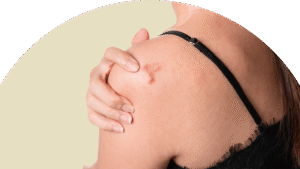
hoof nipper
Ever heard the saying “no hoof, no horse”? It’s not just an old barnyard idiom. It’s a fact backed by farriers, vets, and equine experts worldwide. A horse’s health literally stands on its hooves. According to a study by The Horse magazine, over 85% of lameness cases in horses originate in the hoof. Improper hoof care can lead to chronic pain, performance loss, and expensive vet bills.
That’s why learning to properly trim hooves with hoof nippers is a must-have skill for horse owners, ranch hands, and anyone serious about equine care. Experts say, “a renowned natural hoof care practitioner emphasizes that consistent, correct trimming not only prevents issues but can also reverse early signs of hoof damage”.
In this guide, we’ll break down the process into simple, safe, and effective steps. Whether you’re a beginner or brushing up on your skills, you’ll learn how to handle nippers like a pro and keep your horse standing strong.
Why Trimming Matters
A horse’s hoof grows about ¼ inch per month. Without regular trimming, hooves can become unbalanced, cracked or even cause joint strain and injury. By trimming every 4–8 weeks (depending on the horse and terrain), you help maintain a healthy gait and strong hooves.
What You’ll Need Before You Start
Before you even think about lifting a hoof, gather the right tools. Quality matters here not just for results but for safety too.
Essential Tools:
| Hoof Nippers | Hoof Nippers are used to cut excess hoof walls. Choose a size appropriate for your hand and your horse’s hoof size. |
| Hoof Rasp | Smooths and levels the hoof after trimming. |
| Hoof Pick | To clean debris and check for stones or infections |
| Hoof Knife | For more precise sole or frog trimming. |
| Gloves & Safety Glasses | Always protect your hands and eyes. |
Step-by-Step Trimming Process
Let’s break it down into manageable steps, especially if you’re just starting out.
Step 1: Calm and Secure the Horse
Make sure your horse is tied securely in a quiet, familiar area. Some horses may need a handler, especially during their first few trims. Speak calmly and offer reassurance throughout the process.
Step 2: Clean the Hoof
Use a hoof pick to remove all dirt, manure, and stones from the sole and frog area. This allows you to inspect the hoof for cracks, thrush, or abnormalities before trimming.
Step 3: Evaluate the Hoof
Before trimming, take a close look. Is one side longer than the other? Is the hoof wall cracked or flared? Knowing what needs correction will guide your trimming decisions.
Step 4: Use Hoof Nippers
Start trimming from heel to toe in small sections. Avoid taking off too much at once. The goal is to level the hoof wall evenly with the sole. Use two hands on the nippers for control, and stay aware of where your fingers are at all times.
Pro Tip: Cut conservatively. You can always take more off, but you can’t put it back.
Step 5: Level and Smooth with a Rasp
After trimming with nippers, use the hoof rasp to smooth out rough edges and level the bottom of the hoof. Always rasp in one direction and check your work frequently from all angles.
Step 6: Repeat for Each Hoof
Take your time. Each hoof is unique and may require slight adjustments. If your horse is getting impatient, take short breaks between feet to keep things calm.
Signs You’ve Trimmed Correctly
- The hoof is level and flat when placed on the ground.
- The wall is even with the sole (not excessively long).
- There are no sharp or jagged edges.
- The horse is walking comfortably after the trim.
Common Mistakes to Avoid
Even seasoned owners make errors. Here are a few things to watch out for.
| Trimming too short | This causes soreness and may lead to bruising |
| Ignoring the frog | Clean it, but avoid cutting unless there’s excess |
| Unlevel cuts | This throws off balance and causes strain. |
| Skipping regular trims | Leads to long-term structural issues. |
How Often Should You Trim?
Most horses need trimming every 6 to 8 weeks, but some may require more frequent attention, especially if they’re barefoot and working on soft ground. Hooves grow faster in warmer months and may need more attention then.
When to Call a Farrier
While light maintenance trims are manageable for many horse owners, there are situations when you should absolutely call a professional farrier.
|
|
|
|
Professional farriers have years of training and experience with hoof angles, balance, and problem-solving that go beyond the basics.
Tips for successful trimming of hooves.
- Trim after a light exercise or a warm bath, the hooves will be softer and easier to cut.
- Keep tools sharp and clean.
- Work in good lighting and wear closed-toe shoes.
- Be patient. The more relaxed you are, the more relaxed your horse will be.
- If you’re unsure, don’t guess. Ask an experienced farrier for guidance, or take a hands-on class.
Conclusion
Trimming your horse’s hooves with hoof nippers isn’t just a chore; it’s part of responsible care that strengthens your bond and keeps your horse healthy from the ground up.
Start small, stay safe, and know when to bring in a professional. With practice and patience, you’ll develop the skill and confidence to handle basic hoof maintenance like a pro.
Need Help Choosing the Right Hoof Nippers or Tools?
Check out trusted farrier supply stores or ask your local farrier for recommendations on brands and sizes.
If you found this guide helpful, feel free to share it with fellow horse owners or drop your trimming questions in the comments.


